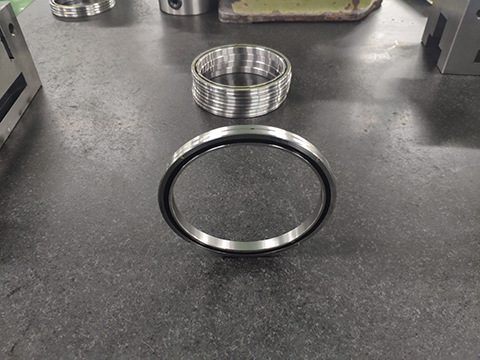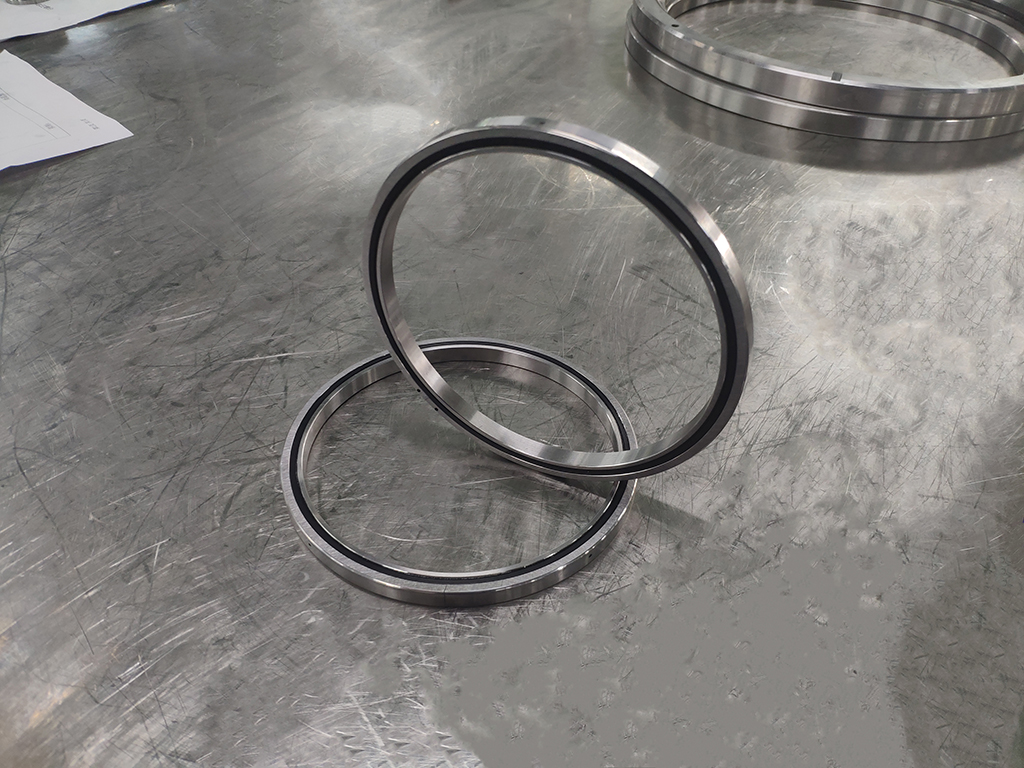1. The precision level that thin-walled bearings can achieve is much higher than that of ordinary slewing bearings, and the radial runout and axial runout that can be achieved are much higher than ordinary slewing bearings.
2. The rigidity of thin-walled bearings is much higher than that of ordinary slewing bearings, and the running noise is lower than that of crossed roller bearings. Therefore, in a low-noise working environment, it is better to choose crossed roller slewing bearings.
3. In terms of structure, the structure of thin-walled bearings is relatively simple. Through a row of cylindrical rolling elements arranged crosswise on a single raceway, a considerable bearing, radial bearing capacity and overturning moment can be obtained, while ordinary turntables The bearing must be arranged sequentially on three rows of raceways through three rows of cylindrical rolling elements to achieve the same effect.
In this comparison, thin-walled bearings take up much less space and are lighter in weight than ordinary three-row roller slewing bearings. And because the structure of thin-walled bearings is much simpler than that of traditional bearings, through the multi-row arrangement of cylindrical rolling elements, considerable axial and radial bearing capacity and overturning moment can be obtained, and the structure is relatively simple, while traditional bearings must The same effect can be achieved by arranging multiple sets of bearings in sequence.
It brings great convenience in terms of design, assembly and installation. And because the single-row raceway structure occupies much less equipment space than traditional bearings, the difficulty of assembly is also greatly reduced.



